Jaxon Announces Results from Petrological Dating and Zircon Study at Netalzul Mountain Project
January 13, 2021, Vancouver, Canada - Jaxon Mining Inc. (“Jaxon” or the “Company”) (TSX.V: JAX, FSE: OU31, OTC: JXMNF) is pleased to announce the preliminary results from the first in a series of Bulkley granite intrusion and sulfide quartz vein “rock” dating and zircon thermometry (melting temperatures) studies from Jaxon’s 100% controlled Netalzul Mountain Project at its Hazelton Property in the Skeena Arch. The study results will allow Jaxon to vector 2021 drilling targets in on the hotter, younger, and more extensive Cu, Ag and Au polymetallic zones.
The studies further describe the setting of the high-grade polymetallic Ag-Au-Cu-Zn-Pb Intermediate Sulfidation (IS) deposits at Netalzul. The deposits and their distal porphyritic sources were formed approximately 61.60 to 63.68 million years ago in the Late Cretaceous to Early Tertiary (Paleocene) period. This places the formation of the mineralized zones at Netalzul within a comparable age range and setting (underlain by rocks from the Stikine terrain) of other previously discovered polymetallic deposits in the region (i.e. the Blackwater Au/Ag project) (Figure 1). Jaxon’s work further indicates an eastward migration of the Coast Range continental arc magmatism across the Skeena Arch area (Figure 7).
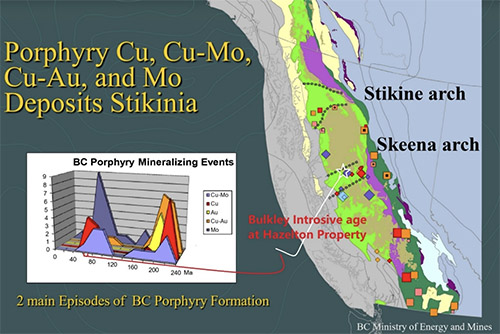
Figure 1. Two main episodes of BC porphyry formation and epithermal Au-Ag-Cu deposit forming age at Netalzul Mountain (modified from BC Ministry of Energy and Mines, 2011)
Highlights of Zircon and Dating Study of Granodiorite and Sulfide Quartz Veins Samples at the Netalzul Mountain Project
- Testing zircon crystallization ages for three samples, A0027520,A0020746 and Ellen-1, are 62.99±0.20, 63.67±0.21 and 63.68±0.20, respectively. All fall in the first major episode of BC porphyry formation from Late Cretaceous to Early Eocene age period and are approximately 3-4 Ma years later than in the Bulkley intrusive at the Company’s Red Springs project 12 km west of the Netalzul Mountain project (Figure 7). This indicates an eastward migration of the Coast Range continental arc magmatism in the Hazelton property area.
- The molybdenite Re-Os dating ages for the Ellen-1 sulfide quartz vein and A0020746 granodiorite sample are 61.6 to 63.5 Ma and within the same age range of the zircon ages, which demonstrate the mineralization and granodiorite intrusive may have been formed in the same time period and from the same magma source in the different evolution phases.
- CL images of the zircon grains show most are magmatic zircon and contain both minerals and/or fluids inclusions, which indicate the zircons formed from hydrous magma and in late phases of magma crystallization.
- The low Th/U (<0.45) and high Yb/Gd (>15) ratios of zircons and high Hf concentration (>9000 ppm) in the zircons indicate the zircon formed from mineralized, fertile oxidized, hydrous magma at 61-63 Ma age (Figure 11).
- Ti-in-zircon model temperatures (680o-750o) for all samples and oxygen fugacity buffered by fayalite-magnetite-quartz (FMQ) studies indicate that fertile Bulkley intrusion yielded lower model temperatures ca. 750°C–600°C, which is consistent with zircon crystallization in near-eutectic conditions at close to the solidus of hydrous granite melt.
Mr. John King Burns, CEO and Chairman of the Board commented, “These petrological test results tie our rocks into time and temperature windows in regional geological history that occurred around the Laramide mountain building period, when the forces of regional accretional orogeny resulted in the formation of a series of porphyries at Hazelton and other documented porphyries in the Skeena Arch area. This rock dating data extends and confirms Jaxon’s understanding of the size and potential depths of the systems of porphyries we have discovered at Netalzul and Red Springs. The dating and temperature results inform the continuing structural mapping work we are using to vector Jaxon’s drilling targets. In 2021, Jaxon will focus its first drilling on the structurally controlled and more extensive Cu, Ag, Au polymetallic zones at Netalzul. Both the results from the granite intrusion, sulfide quartz vein “rock” dating and zircon thermometry “temperature” studies extend Jaxon’s geological model and allow us to picture Netalzul as the host to younger and deeper Brucejack type deposits. Our modeling indicates that the continuation of surface sampled mineralization at Netalzul may extend to depths of more than 1000 metres.”
During 2020 field work, three expansive structurally controlled high-grade silver-polymetallic mineralization zones were identified by geochemical and geophysical studies, rock sampling and structural mapping (https://bit.ly/3smGwrF) (Figure 2):
1. Daisy North Contact Zone: artisanal working zone, up to 1000m long and 12m wide, structure-controlled fault/shear zone developed along contact between granite and hornfelsed latite. 1.5m chip sample assayed 4577 g/t Ag, 3.04% Cu, 4.52% Zn, 3.40% Pb, 2.08% Sb. Grab samples assayed up to 5301 g/t Ag, 37.85% Zn, 29.18% Pb, 3.35% Cu, 2.32% Sb. Soil geochemical and aeromagnetic studies confirm zone extension. Two rock samples (Ellen-1 and A0020746) from within this zone have been subjected to age dating studies (Figure 2).
2. Daisy South Adit Zone: artisanal adit area, up to 1000m long and 150m wide with multiple 2-5m wide sulfide quartz veins all fault-controlled and occur in a hydrothermally induced magnetite destruction area within strong magnetic granite. 2m outcrop samples assayed 486 g/t Ag, 1.40 g/t Au, 1.40% Cu. One rock sample from sulfide quartz vein has been collected for age dating. Neither zircon nor molybdenite mineral are available for dating study.
3. Daisy East Zone: occurs in a glacier retreating from the top of Netalzul, up to 1000m long and 2m wide within clay altered granite. Grab samples assayed 275 g/t Ag, 0.8 g/t Au, 1.53% Cu. One rock sample (A0027520) from Bulkley intrusive has been subjected to zircon age dating (Figure 2).
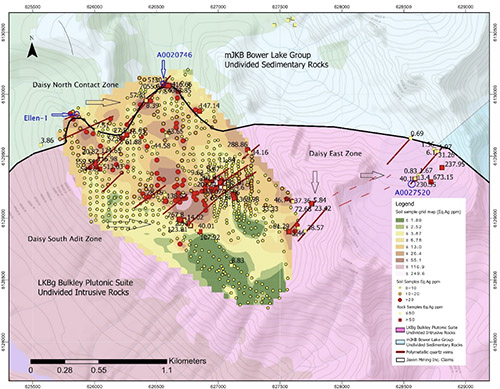
Figure 2. Comprehensive map of EqAg in soil anomalies and in rock samples; and mineralization zone at Netalzul Mountain
The results from four of 15 rock samples submitted for dating and zircon studies have been received (Table 1, Figure 2). Available molybdenite minerals from two of three Mo-bearing rock samples have been examined using Re-Os isotope dating. The results of Re-Os isotope dating for molybdenite minerals are listed in Table 2 below. The Re-Os dating age of molybdenite in the sulfide quartz vein sample Ellen-1 (Figure 3) is 63.3 Ma; the Rs-Os ages of molybdenite in the granodiorite sample (Figure 4) are 61.6 to 63.5 Ma, respectively, for two different dating spots within the range of errors. The dating results indicate both molybdenite minerals in the sulfide quartz vein from the Ellen claim and in the granodiorite near the Daisy North Contact Zone formed in the same time period and are from the same source magma. The molybdenite mineralization and hosting intrusion formed from different evolution phases of the same magma.
Table 1. Dating Rock Samples Details from Netalzul Mountain Project
| No. | Samples ID | Description | Area | U-Pb Zircon Dating | Molybdenite Dating | Note |
| 1 | A0020746 | Granodiorite, containing moly, Daisy north contact zone | Daisy north contact zone | √ | √ | Group1 |
| 2 | A0027520 | Granodiorite, 2 Pieces | Daisy east zone | √ | Group1 | |
| 3 | Adit 2 | Quartz vein, containing moly | Daisy south adit zone | √ | Group1 | |
| 4 | Ellen-1 | Quartz vein, containing moly | Ellen claim | √ | √ | Group1 |
Table 2. Molybdenite Re-Os Dating of Samples from Netalzul Mountain Project
| Sample ID | 187Re (ng/g) | 1σ | 187Os (ng/g) | 1σ | Re (ng/g) | 1σ | Model Age (Ma) | 1σ | |
| 1 | Ellen-1 | 13846 | 361 | 14.62 | 0.14 | 22119 | 577 | 63.3 | 0.6 |
| 2 | A0020746 | 11588 | 213 | 12.26 | 0.12 | 18511 | 340 | 63.5 | 0.6 |
| 3 | A0020746 | 13523 | 183 | 13.89 | 0.08 | 21602 | 293 | 61.6 | 0.3 |
| 4 | A0027520 | NA | |||||||
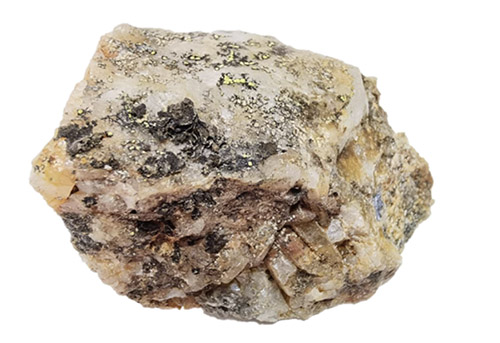
Figure 3. Sample Ellen-1, sulfide quartz vein within Bulkley granite intrusion at the Ellen Claim, Netalzul Mountain

Figure 4. Sample A0020746, granodiorite with fracture filling molybdenite from footwall of Daisy North Contact Zone, Netalzul Mountain
Three of four rock samples (A0020746, A20027520 and Ellen-1) (Table 1 and Figure 5) with available zircon grains collected (>150 grains) have been subjected to LA-ICMP Zircon U-Pb dating, chemistry composition and cathodoluminescence (CL) images studies (Figure 6). The CL images indicate the majority of these zircons are magmatic zircons and only a few of them have inherited cores. Most of these zircons contain inclusions of either minerals or fluids, which show these zircons were formed from hydrous magma and may be the result of late phase magma crystallization.
The zircon concord ages of A0020746,A20027520 and Ellen-1 are 63.67±0.21, 62.99±0.20 and 63.68 ±0.20, respectively (Table 3). The weighted average 206U/238U ages of samples A0020746,A20027520 and Ellen-1 are 63.70±0.37,62.92±0.50 and 63.68±0.56, respectively. The dating age range is 62.9-63.7 within the range of errors. Three granite rocks’ dating results from the Red Springs project in 2019 are also listed in Table 3 for discussion purposes.
The Bulkley intrusive suite from Cretaceous to Eocene in the Stikine terrain is associated with a series of Cu-Mo porphyry deposits and Ag polymetallic epithermal deposits including past produced Cu and Ag mines including the Huckleberry Cu mine, Silver Standard, Blackwater and Equity Silver mines (Figure 7). The ages of the Bulkley intrusive suite have been reported to be 88 to 67 Ma in the Blackwater deposit area (Looby, 2015). The dated ages of Bulkley intrusive suite at the Hazelton property (Table 2-3) and the Rocher de Boule area (Figure 7) show a similar eastward migration of the Coast Range continental arc magmatism to that in the Blackwater deposit area at that time.
Table 3. Intrusion Rock Samples and Dating Information Summary
| Sample ID | 187Re (ng/g) | 1σ | 187Os (ng/g) | 1σ | Re (ng/g) | 1σ | Model Age (Ma) | 1σ | |
| 1 | Ellen-1 | 13846 | 361 | 14.62 | 0.14 | 22119 | 577 | 63.3 | 0.6 |
| 2 | A0020746 | 11588 | 213 | 12.26 | 0.12 | 18511 | 340 | 63.5 | 0.6 |
| 3 | A0020746 | 13523 | 183 | 13.89 | 0.08 | 21602 | 293 | 61.6 | 0.3 |
| 4 | A0027520 | NA | |||||||
Zircon (Zr[Hf]SiO4) is a common accessory mineral in granitoid rocks including those that generate and host porphyry copper deposits. Zircon can indicate the evolution of its host magma and provide information on that magma’s ability to generate a porphyry copper deposit (Bouzari et al., 2020). The trace and rare elements composition, the Th/U ratio, Yb/Gd ration, ΔFMQ/Eu/Eu* ratio, Ti-in-Zircon temperature have been studied using LA-ICP-MS (Figures 8-11). Majority zircons (>95%) from all three samples have lower Th/U (<0.45) and higher Yb/Gd (>15) (Figure 8), which shows the typical chemistry characters of zircon formed from mineralized magma (Bouzari, et al., 2020). Oxygen and Deuterium Isotope Analysis shows oxygen fugacity buffered by fayalite-magnetite-quartz (FMQ) in the majority zircons are greater than +1.0 with Eu/Eu* >0.45 show the oxidized magma features (Figure 9). Ti-in-zircon temperatures studies show the crystallization temperatures of samples A0020746,A20027520 and Ellen-1 are C - 691° C - 756°C-683°C - 720°C 681°and C - 777°C, respectively and consistent with lower model temperatures of ca. 750C to 600C for most mineralized porphyry intrusives and are also consistent with zircon crystallization in near-eutectic conditions close to the solidus of hydrous granite.
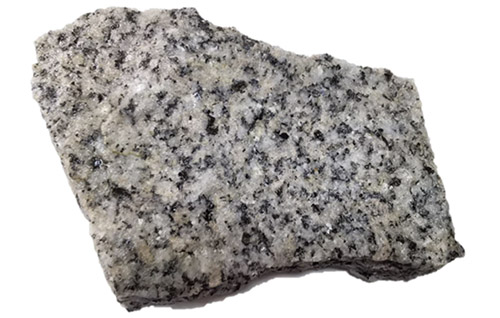
Figure 5. A0027520, granodiorite from Daisy East Zone, Netalzul Mountain
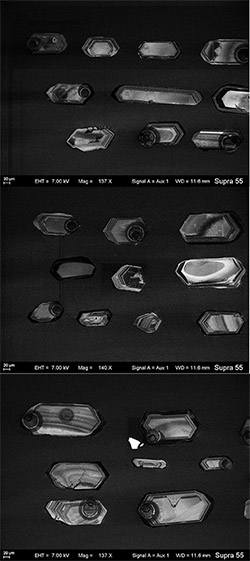
Figure 6. Cathodoluminescence (CL) images for zircon minerals from dating rock samples, Netalzul Mountain. From top to bottom: A0020746, A0027520 and Ellen-1.
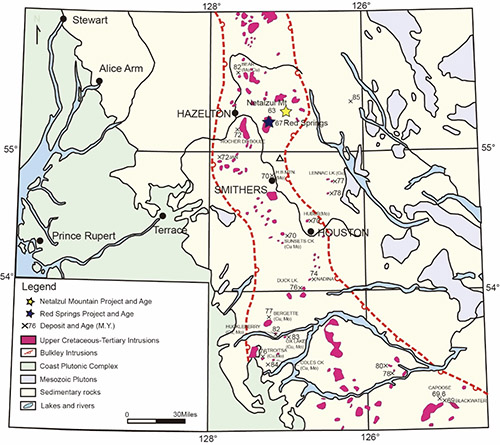
Figure 7. Dating ages for Bulkley intrusive suite, Skeena Arch
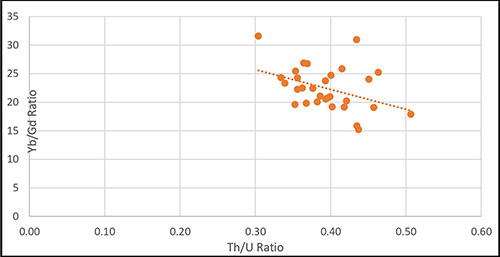
Figure 8. Binary diagram of Th/U versus Yb/Gd from zircon grains within three rock samples from Netalzul Mountain
 Figure 9. Binary diagram of FMQ versus Eu/Eu* from zircon grains within three rock samples from Netalzul Mountain
Figure 9. Binary diagram of FMQ versus Eu/Eu* from zircon grains within three rock samples from Netalzul Mountain
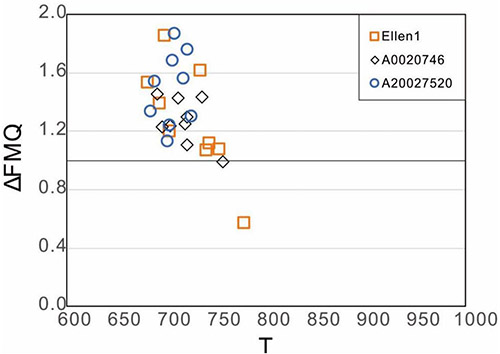 Figure 10. Binary diagram of FMQ versus zircon formation temperature (T) from three rock samples from Netalzul Mountain
Figure 10. Binary diagram of FMQ versus zircon formation temperature (T) from three rock samples from Netalzul Mountain
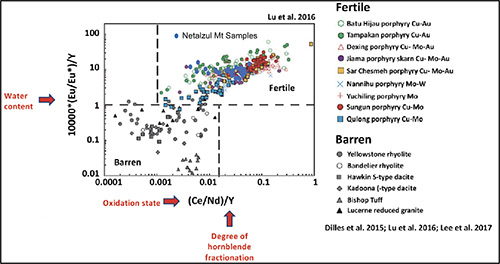 Figure 11. Proxies for condition of magma formation diagram of Eu/Eu* versus ((Ce/Nd)/Y (After MDRU, 2020)
Figure 11. Proxies for condition of magma formation diagram of Eu/Eu* versus ((Ce/Nd)/Y (After MDRU, 2020)
Sample Preparation and Analyses
U-Pb geochronology of zircon was conducted by LA-ICP-MS at Nanjing FocuMS Technology Co. Ltd. Australian Scientific Instruments RESOlution S-155 laser-ablation system (Canberra, Australia) and Agilent Technologies 7700x quadrupole ICP-MS (Hachioji, Tokyo, Japan) were combined for the experiments. The 193 nm ArF excimer laser, homogenized by a set of beam delivery systems, was focused on zircon surface with fluence of 3.5J/cm2. Each acquisition incorporated 20 s background (gas blank), followed by spot diameter of 33 um at 5 Hz repetition rate for 40 s. Helium was applied as carrier gas to efficiently transport aerosol out of the ablation cell, and was mixed with argon via T-connector before entering ICP torch. Dwell times were set to 20 ms for 207Pb, 15 ms for 206Pb and 208Pb, 10 ms for 232Th and 238U, and 8 ms for other trace elements. Harvard standard zircon 91500 (1062Ma) was used as external standard to correct instrumental mass discrimination and elemental fractionation during the ablation. GJ-1(600Ma) and Plešovice (337Ma) were treated as quality control for geochronology. Trace elements abundance of zircon were external calibrated against NIST SRM 610 with Si as internal standard. Raw data reduction was performed off-line by ICPMSDataCal software (Liu et al, 2010).
Re and Os concentrations were determined by isotope dilution. 185Re and 190Os spikes from Oak Ridge National Laboratory, USA. Detailed procedures for sample preparation are available in Du et al. (2001, 2004). Re and Os isotopic intensities were measured with an Agilent 7700X Quadrupole ICP-MS. Because of the low concentration of Os, intensities of the Os isotopes were measured with a Pt screen. The intensities of both Re and Os in this mode are ~400,000 cps/ppb. 190Os intensity was used to correct for the interference of 187Os on 187Re and 185Re intensity was used to correct for Re on Os. The total procedural blanks were about 5 pg for Re and 1 to 0.2 pg for Os based on blank runs analyzed together with the samples. 187Os/188Os ratios of the blank are 0.25 based on routine measurements. The standard material, GBW04436 (JDC, a molybdenite from the Jinduicheng deposit, China), was used to monitor the accuracy of the measurements. Re and Os contents and Re–Os ages of the JDC molybdenite determined during the course of this work are 16676 ± 261 ppb, 24.40 ± 0.45 ppb and 140.1 ± 2.6 Ma , respectively, which coincide within uncertainties with the reference values (Re = 17,390 ± 320 ppb, Os = 25.5 ± 0.6 ppb and t =139.6 ± 3.8 Ma; Du et al. 2004). The procedural blanks of Re and Os are 1.8 pg and 0.2 pg, respectively.
Qualified Person
Yingting (Tony) Guo, P.Geo., President and Chief Geologist for Jaxon Mining Inc., a Qualified Person as defined by National Instrument 43-101, has reviewed and prepared the scientific and technical information and verified the data supporting such scientific and technical information contained in this news release.
About Jaxon Mining Inc.
Jaxon is a precious and base metals exploration company with a regional focus on Western Canada. The Company is currently focused on advancing its Netalzul Mountain and Red Springs Projects in north-central British Columbia.
ON BEHALF OF THE BOARD OF DIRECTORS
JAXON MINING INC.
“John King Burns”
John King Burns, Chairman
For more information please contact:
Investor Relations
Kaye Wynn Consulting
T: 604-558-2630
TF: 1-888-280-8128
E: info@kayewynn.com
Freeform Communications
T: 604-243-0499
E: enquiries@freeform.com
Corporate
T: 604-424-4488
E: info@jaxonmining.com
https://jaxonmining.com
This news release may contain forward-looking information, which is not comprised of historical facts. Forward-looking information involves risks, uncertainties and other factors that could cause actual events, results, performance, prospects and opportunities to differ materially from those expressed or implied by such forward-looking information. Forward-looking information in this news release may include, but is not limited to, the Company's objectives, goals or future plans. Factors that could cause actual results to differ materially from such forward-looking information include, but are not limited to, those risks set out in the Company's public documents filed on SEDAR. Although the Company believes that the assumptions and factors used in preparing the forward-looking information in this news release are reasonable, undue reliance should not be placed on such information, which only applies as of the date of this news release, and no assurance can be given that such events will occur in the disclosed time frames, or at all. The Company disclaims any intention or obligation to update or revise any forward-looking information, whether as a result of new information, future events or otherwise, other than as required by law. Neither TSX Venture exchange nor its Regulations Services Provider (as that term is defined in the policies of the TSX Venture Exchange) accepts responsibility for the adequacy or accuracy of this release.
